After the business of preparing to move house and going on holiday I’m finally finding time to wrap up my trio of posts about grey sheep and dying their wool. For a refresher on earlier grey sheep adventures check out Beginning Adventures with Grey Sheep and More Grey Sheep Love: Spinning with Gotland.
In my previous post, I talked about spinning up some grey Gotland top into a lace-weight single. This time I’ll talk about spray dying it before plying, and also dying and spinning up a mid-grey Massam top.
Spray dying is fun and can be easily done outside, which is how I like to work. Even in the rain, you can get a good dye job done, and I love feeling like the fresh air and the crisp Northern England damp are spun into my yarn. It’s a little bit unpredictable, but since dying grey fleece is a bit unpredictable anyways, I don’t have a problem with this.
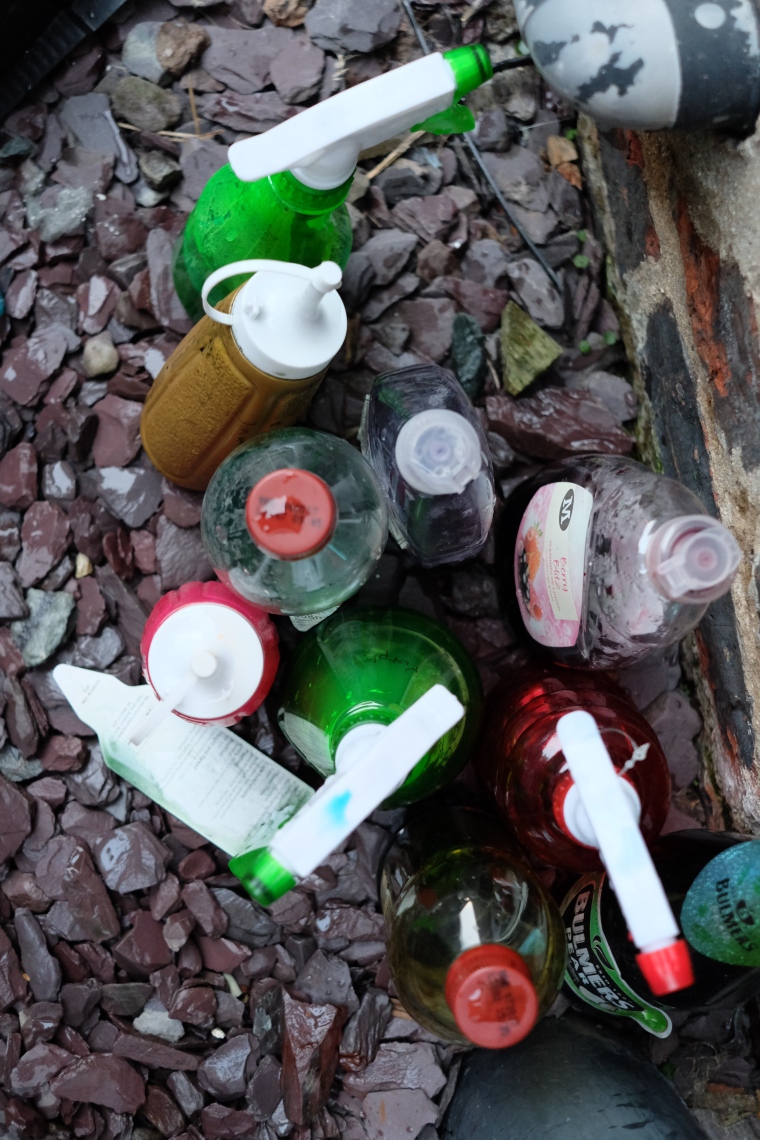
Just like with handpainting and dying, I always start with a good long soak in vinegar and water.
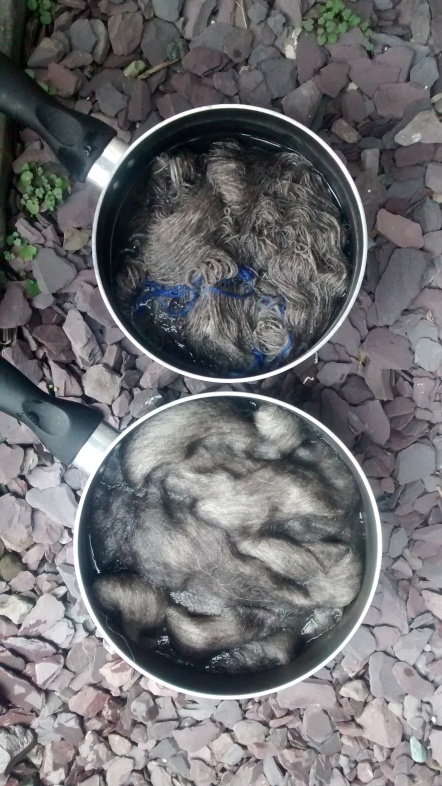
Pictured above is my Gotland single and my Massam top, bathing in vinegar and coordinating nicely with the slate gravel in my back garden.
Once the items have soaked for a good half hour to 45 minutes I hang them out on the washing line. It’s good to let them drip for a little bit before applying the dye so that all of the dye doesn’t drip away.
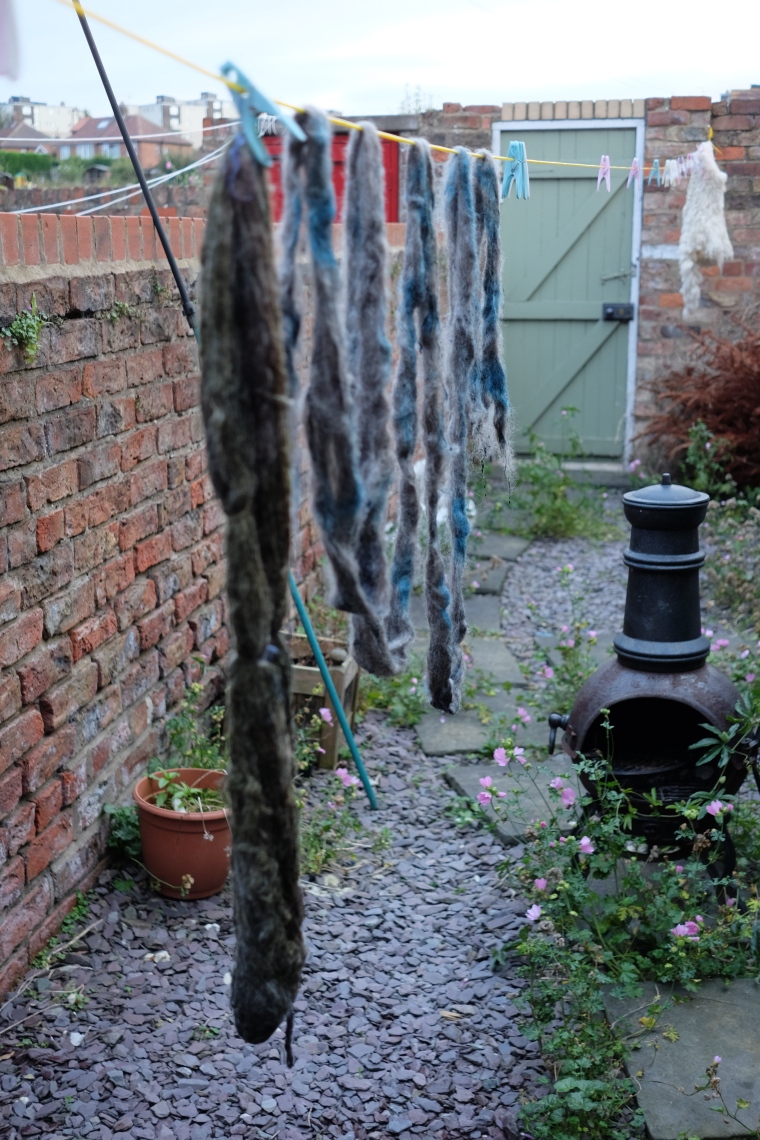
With skeins I start spraying at the top and let the dye soak in and drip down before spraying in further down. With top, since it’s sort of slung over the line I concentrate the dye at the bottom of the loops and then work my way up. 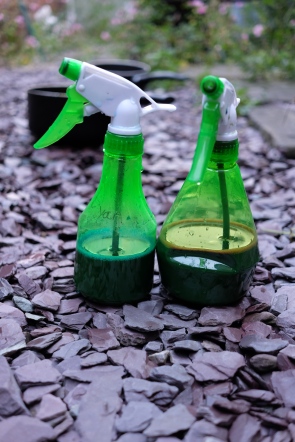
After applying the dye, I let it sit on the wool for about 45 minutes and then I carefully wrap it up in long sausages of cling film or plastic wrap, pop it into Ziploc bags, and steam it in a colander on the stove for about 45 minutes. Then I let it cool a bit outside before unwrapping it into a sink of warm water, and letting any excess dye rinse away.
The thing about spraying when the wool is hanging is that you can’t separate the strands of yarn or fibres like you can when handpainting in a tray. With grey fleece it’s even more of a gamble because when wet, it’s so dark that it’s hard to tell where the colour is going. My Gotland single was a complete mystery until it had been rinsed and dyed.
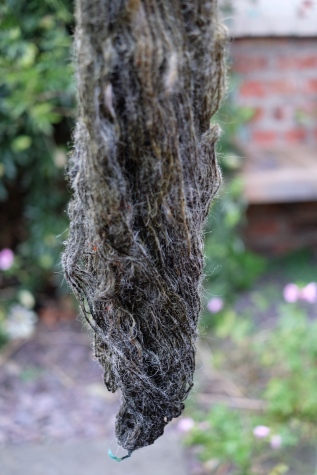
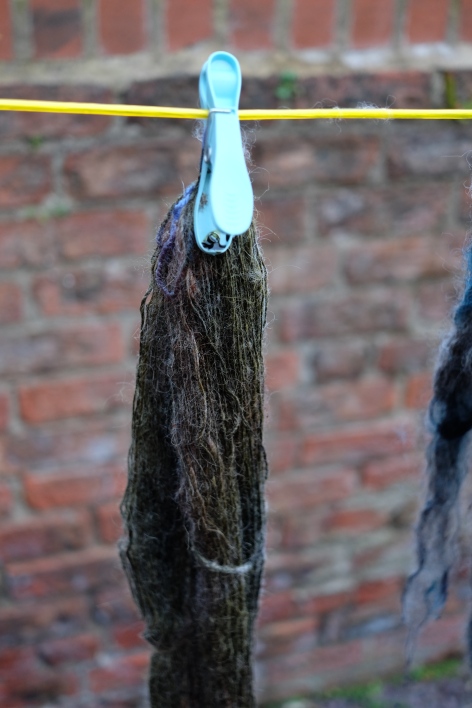
So on that note, I’ll talk more about the individual pieces that I dyed this time. The Gotland single was a lovely soft grey all on its own. However, I always intended on dying it as the next in my series of landscape-inspired yarns (for more on that, check out Landscape Yarns). The colours were inspired by my drives through the Scottish Borders region. I sprayed the skein with some olive green, a bit of yellow, and a dark forest green, and then dribbled on some of a terracotta colour from a squeeze bottle.
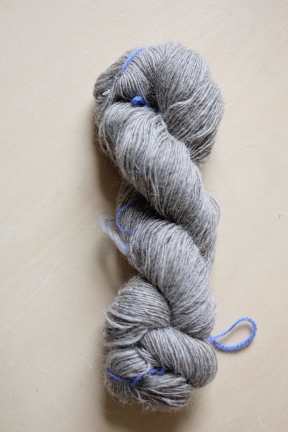
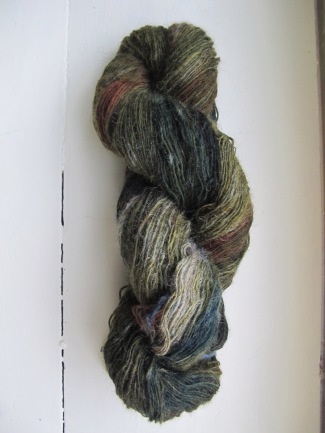
The result was just as I had hoped, and captures the shifting greens and earthiness of the views from my drives down the M74 motorway.
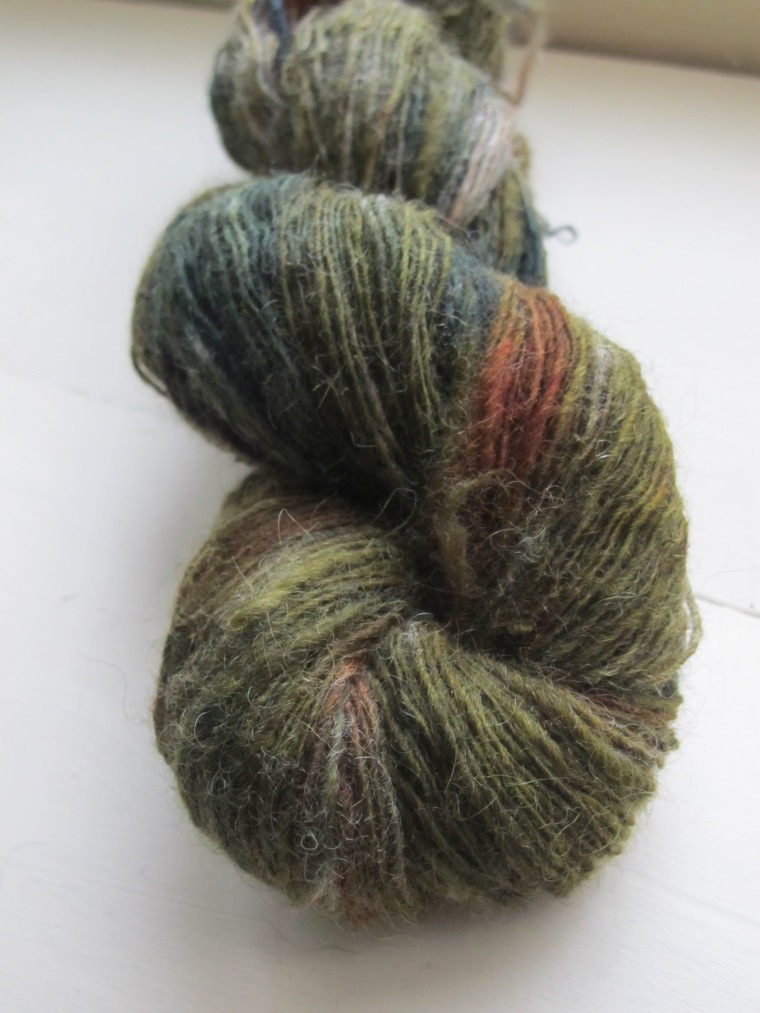
I should have left it as it was, but I went ahead with the original plan and chain plied it into a DK weight yarn. The result is pleasant and almost looks like a tweed yarn, but I think I prefer it the way it was as a single. It was a good experiment, but I have some regrets, and I feel like the more dramatic colour shifts that I liked in the single were lost in the plying.
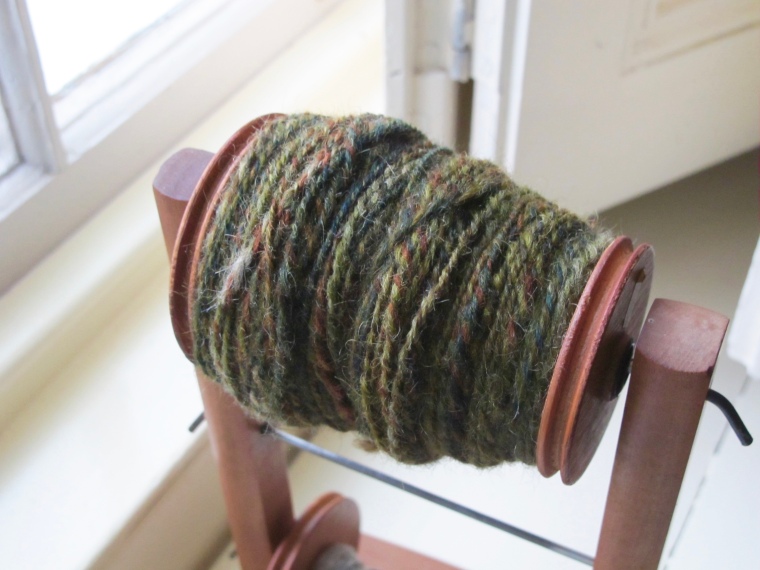
The Massam top which I dyed the same day was my first time working with this breed of fleece. In many ways it’s a lot like Gotland, but it’s a British sheep from the north, originally bred from a cross between Wensleydale and Swaledale breeds. It’s soft, with long staples and a lovely halo.
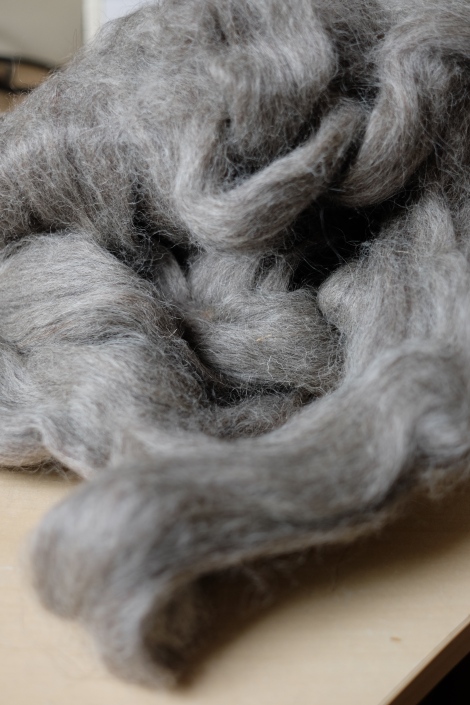
Spray dying this was very quick. With the natural grey as the base, I only used one main dye, and a few dribbles of a darker contrast blue and let the dripping of the wet top do the blending of colour for me. I wanted to leave quite a bit of the grey showing since in the past I’ve gotten carried away with the spray bottles and the resulting top hasn’t had very much variegation.
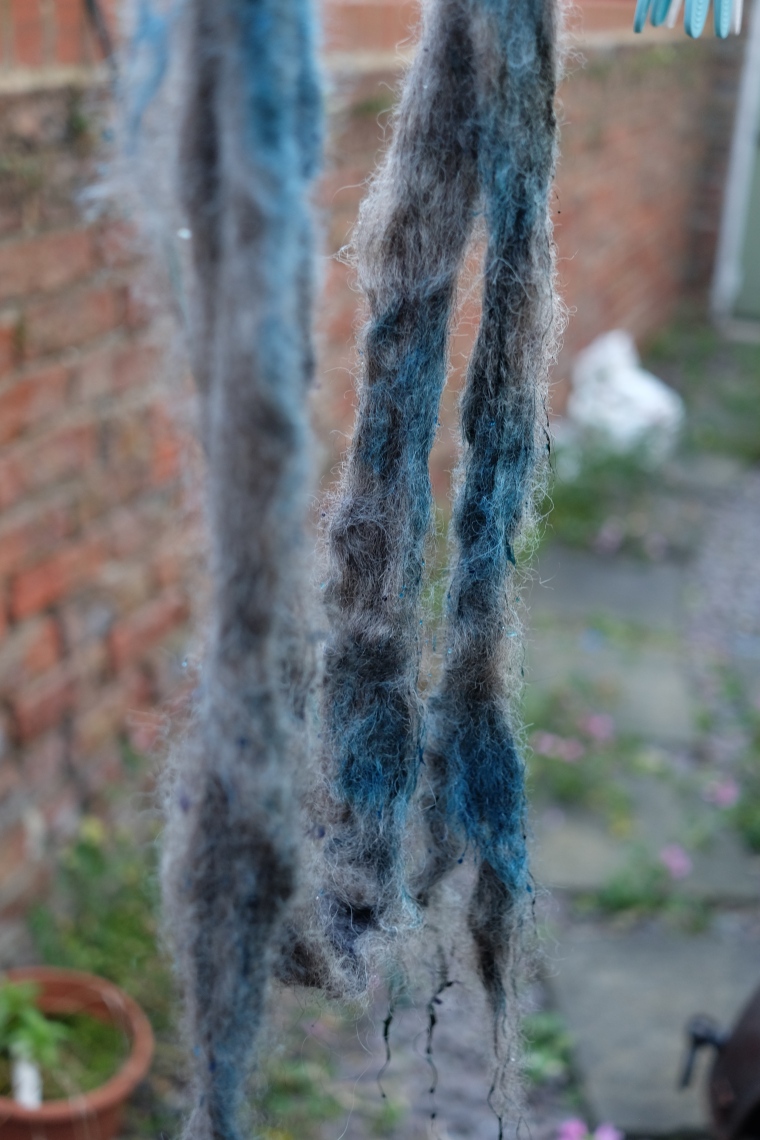
Above is the wet, dyed top, hanging on the line. Below it’s all dried and fluffy.
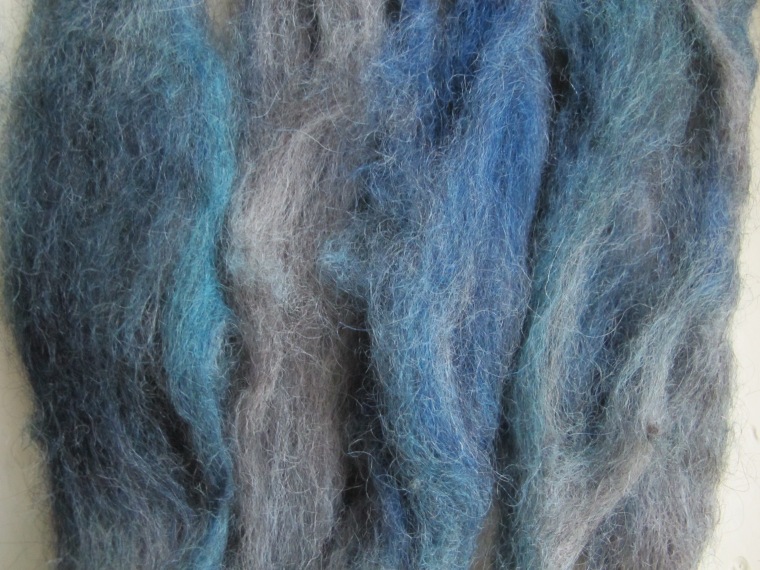
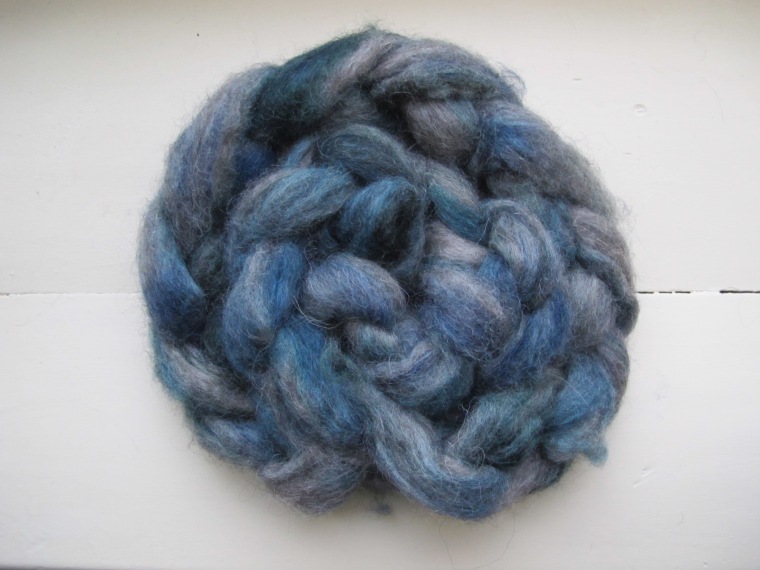
Spinning it was a proper pleasure because of the long staples and soft, lightweight texture. I decided to leave it as a single because I was pleased with how the variation in blues turned out.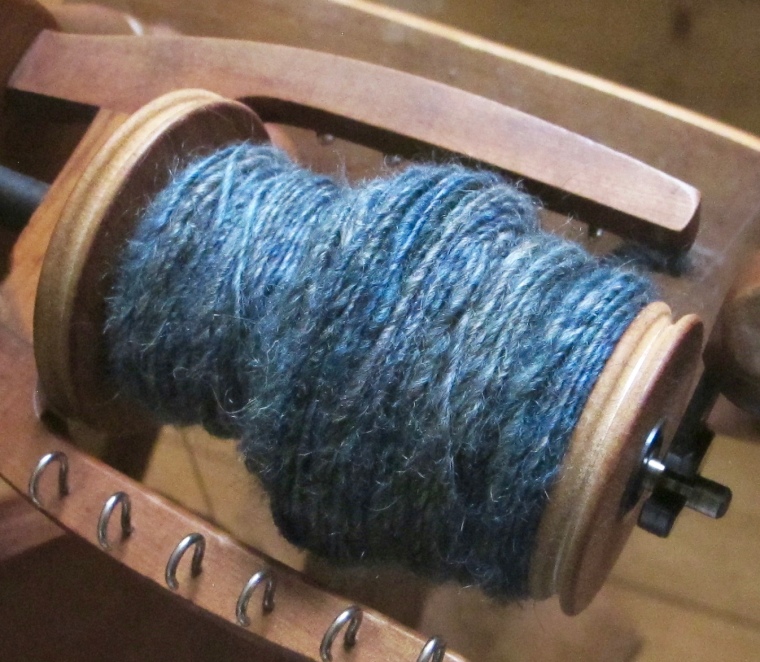
And that concludes my grey-sheep adventures so far. Next I’m moving on to some lovely brown French merino and a lot of undyed raw alpaca fleece!
All images and content copyright ©Martha Welland, 2015
Please credit spunplum.wordpress.com if sharing any images.

